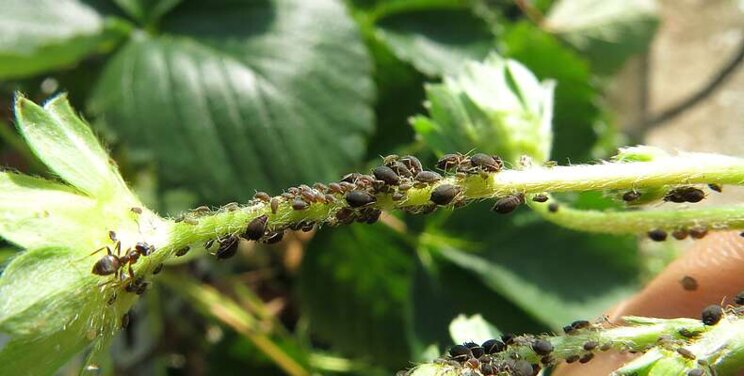Employ predator and parasite programme to control aphids
Added on 01 September 2022

"Strawberry growers are increasingly turning to biological solutions to control aphids using a combination of predators - that directly feed on the pest, and parasitoids - that lay their eggs in the adults," explains Biobest advisor, Jurgen Bouveroux. "By deploying both types, growers can achieve the best results."
Parasitic wasps
The eggs laid by parasitic wasps hatch inside the aphids and the larvae feed on the pest from within," explains Jurgen. "These aphids turn in to gold-coloured parasite mummies from which a new generation of parasitoids emerges.
"With a range of aphid species commonly found in strawberry crops, we recommend introducing several different parasitic wasps. This can be achieved by simply using our Aphi-Mix-System - containing Aphelinus abdominalis, Aphidius colemani, Aphidius ervi and Aphidius matricariae."
Predators
In contrast, predatory lacewings (Chrysopa-System), ladybirds (Adalia-System), gall midges (Aphidoletes-System) and hoverflies (Eupeodes-System and Sphaerophoria-System) feed directly on the pest.
"The larvae attack the aphids sucking out their insides," explains Jurgen. "These predators can quickly significantly reduce pest pressure and are also well suited to keeping control during the season. A good example is Eupeodes corollae; this voracious hoverfly is a strong flyer with good searching ability. Able to quickly locate aphid hot spots, it gives effective control. At higher temperatures, above 25°C, the hoverfly Sphaerophoria rueppellii performs better."
A recent addition is our unique new brown lacewing product (Micromus-System) - a generalist predator that feeds on all common aphid species found in protected crops.
"Winner of the recent 2022 GreenTech Innovation Award, Micromus-System is set to become a cornerstone of aphid control programmes," says Jurgen. "Both Micromus adults and larvae prey on aphids. Highly voracious, this robust predator lives longer, can withstand lower temperatures compared to other natural enemies and survives on little prey - opening up exciting new possibilities in existing control programmes.
"Supplied in our new 100% biodegradable packaging, the lacewings arrive in the best possible shape while waste management for customers is simplified."
Hygiene
As aphids tend to be an ongoing problem through the lifetime of the crop, Jurgen advises starting the biological control strategy as soon as possible.
"By introducing a preventative programme, comprising a combination of the biological control agents mentioned above, the populations can establish before the pest pressure becomes an issue. If you wait until you see the first aphid, you are probably already too late."
Finally, Jurgen points out the importance of 'working clean'. "Aphids can enter a crop by various ways," she says. "They often hitchhike on plant remains from previous crops. Growers would do well to thoroughly clean up plant debris between crops."
Want to know more about aphid control? Contact your Biobest advisor for tailor-made advice.
Source: HortiBiz
More news















